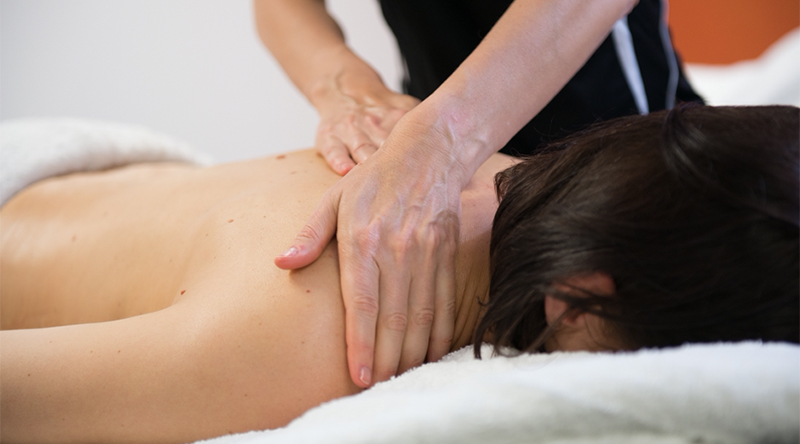
Can I Massage a Lump on my Client?
29 Oct2019 Tagged as
Posted by Evolve College News
As a massage therapist, chances are at some point you will come across a lump or bump on your client that feels quite different to the muscular knots you are there to treat. This article discusses two of the more common lumps you may encounter – Ganglion cysts and Lipomas.
What is a Ganglion cyst?
A Ganglion cyst is a fluid-filled lump that is usually round or oval, that develops along the joints or tendons of the wrist, hand, ankles, knees or feet. Ganglion cysts are more common amongst woman, and typically develop between the ages of 20-40 years. As a massage therapist palpating the tissue, you may feel a Ganglion cyst as a firm or spongy lump, that if pressed moves around slightly under the skin. Ganglion cysts can cause pain both directly over the cyst and locally to the surrounding areas.
Can I massage a client with a Ganglion cyst?
Massage directly onto the cyst is discouraged, as this may cause your client pain and may even cause the cyst to swell to a larger size. If the cyst is irritating the client and they are coming to you to treat it, you must refer them to their healthcare practitioner. Treatment for Ganglion cysts can range from draining the cyst, to removing it completely. Often however, most healthcare practitioners will opt to do nothing and simply wait and see if the cyst disappears on its own. During this time, your client may still receive massage therapy to other areas of the body, however as a therapist you must ensure that you avoid massage to the area local to the cyst. There are some controversial discussions about massage therapy’s ability to ‘pop’ Ganglion cysts with deep pressure, however there is no research to suggest that this is effective or safe for the client, and is therefore strongly discouraged.
What is a Lipoma?
A Lipoma is a soft, oval shaped lump felt just beneath the skin. Lipomas are an overgrowth of fat cells in the body’s soft tissue. People of any age can develop a Lipoma (though they are rare in children) and they can be found on any part of the body, most commonly occurring on the neck, shoulders, arms and thighs. When massaging a client, you may feel a Lipoma as a soft mass that moves easily under the skin. As with any lump or cyst, it is important to refer your client to their healthcare practitioner for a proper diagnosis.
Can I massage a client with a Lipoma?
Typically, Lipomas are only painful for the client when they are compressing a nerve underneath the skin. Additionally, there is a variant of Lipomas called Angiolipoma which is more painful. If your client presents to you with a lump under their skin, or if you come across one during treatment, it is essential that you do not assume or attempt to diagnose the lump yourself. Massage of an unknown lump is contraindicated until your client has seen their healthcare practitioner for proper diagnosis. If your client does have a Lipoma, then although there is no research to suggest that massaging it will do any damage, there is also nothing to suggest that it will help either. It is therefore advised that you avoid making contact with the Lipoma during the massage session, and if you are massaging the site locally to it, then check in with your client whether they feel any discomfort.
Discovery of a lump
If you do come across a lump during a massage session that your client has not mentioned to you, then there is a possibility that they are unaware of it themselves. It is important that you inform your client about it but do so sensitively. For most people, a lump can be a cause for anxiety and concern, and although most lumps are benign and harmless, there are some that are not – therefore, when informing a client about a lump ensure you:
- Wait until the session is over before mentioning it to your client.
- Keep it light and brief; let them know it is most likely harmless – there is no need to generate anxiety. Speak in a normal and respectful tone.
- Don’t provide them with guesses as to what it could be.
- Encourage them to get it looked at by a healthcare practitioner – again, do not generate anxiety, but let them know that it’s always good to have these things looked at just in case.
- Once you have spoken about it, leave the topic alone – there is no need to bring it up again or contact them to ask about the diagnosis.
